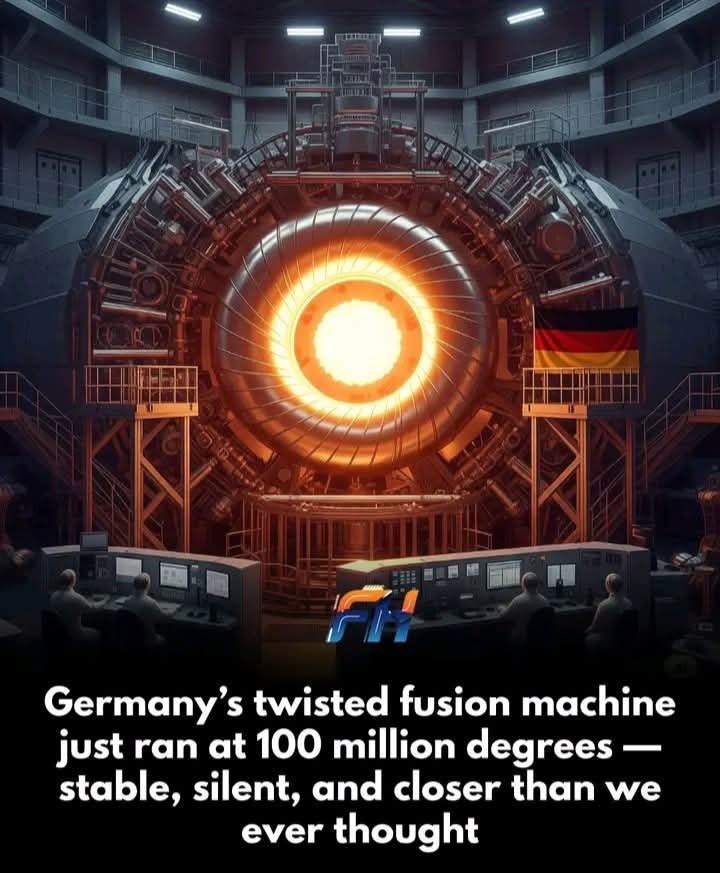At a research facility in Greifswald, Germany, scientists at the Max Planck Institute have achieved a major milestone in the global race for fusion energy: a plasma temperature exceeding 100 million degrees Celsius — and they kept it stable for more than 30 minutes inside a stellarator reactor.
This is no ordinary heat. 100 million°C is hotter than the core of the Sun, and it’s the critical threshold where hydrogen atoms begin to fuse into helium — releasing enormous amounts of clean energy. But the real triumph here isn’t just hitting the temperature. It’s maintaining it with stability, something that has challenged even the largest fusion reactors.
Why It’s a Big Deal
Most fusion research has focused on tokamaks, like ITER in France or EAST in China. These donut-shaped machines rely on pulsed magnetic fields to confine plasma. But plasma is notoriously unstable — it writhes, twists, and often collapses.
Germany’s Wendelstein 7-X stellarator takes a different approach. Instead of relying on a pulse, it uses a complex 3D arrangement of superconducting magnets to twist the plasma continuously, like a Mobius loop. This geometry keeps the plasma from touching the walls, dramatically reducing instability and allowing for long-duration runs.
The Stellarator Advantage
• Continuous Operation: Unlike tokamaks, stellarators can, in theory, run indefinitely — making them better suited for power plants.
• Intrinsic Stability: The twisted magnetic fields naturally prevent many of the instabilities that plague other designs.
• No Pulsing Required: This means smoother energy output and fewer engineering challenges with components.
The Wendelstein 7-X magnet system took over a decade to build and calibrate. Its components were shaped with millimeter precision to guide the plasma along the desired path. The result? A stable plasma at record temperatures — for a sustained half hour.
What’s Next?
Germany’s fusion team is now working on:
• Increasing plasma density and confinement time
• Enhancing the heating system for higher performance
• Laying the groundwork for future power plants based on stellarator designs
This isn’t just a proof-of-concept. It’s a major step toward practical, sustainable fusion power — without the carbon emissions or radioactive waste of conventional nuclear plants.
If stellarators continue to scale and stabilize, they could become the quiet revolutionaries of the energy world.
#FusionEnergy #Stellarator #Wendelstein7X #GermanyInnovation #CleanEnergy #MaxPlanck #PlasmaPhysics #EnergyFuture #SustainableTech #ScienceBreakthrough
|
|

